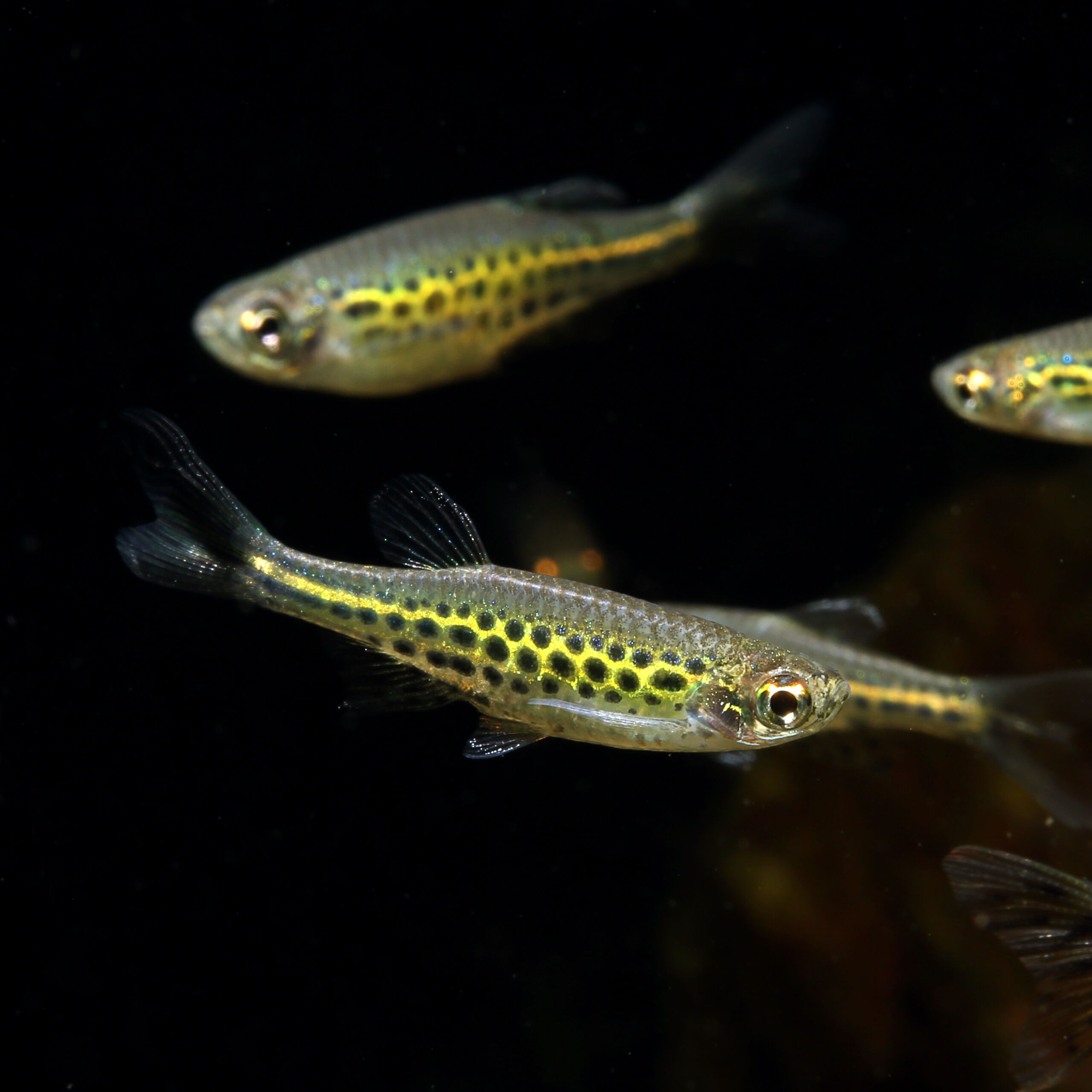Gold Ring Danio
Danio tinwini
The pretty and extremely cute looking Golden Ring Danio is a rarity in aquarium keeping.
- pretty dot pattern
- cute appearance
- only grows to 2-2.5cm long
1 in stock
 Delivery in a few working days
Delivery in a few working days
 Free shipping from €60 across Austria
Free shipping from €60 across Austria





Important data
Product description & details
Danio tinwini, also known as the Gold Ring Danio, has its natural range in Myanmar. The danio, which is only 2-2.5 cm long, inhabits mainly the shaded bank areas of small, oxygen-rich rivers. It is closely related to the Zebra Danio, which has long been known in aquaristics, but in contrast to it is characterized by a delightful looking dot pattern, which – depending on the light – shimmers from dark blue to green. The partly intense golden basic color also represents a great contrast to the dark spots. This great fish is a rarity in the aquarium hobby and is rarely available in stores.
Care in the aquarium
As a schooling fish, the Gold Ring Danio needs at least 8-10 (preferably more) members of its species around it so that it feels comfortable. This tiny creature can easily be kept in a community aquarium with small fish because it is very peaceful. The aquarium should have an edge length of at least 60 cm (this corresponds to 54 liters in standard dimensions) in order to offer the danios enough swimming space. Furthermore, dense edge planting provides opportunities for retreat and a feeling of security. Floating plants that dim the light a little also ensure the well-being of this shade-loving fish. Clean, oxygen-rich water is necessary for Danio tinwini, which is why regular water changes are essential. When it comes to keeping the Gold Ring Danio, it can still be classified as easy to care for.
Feeding
Feeding is very easy for the Gold Ring Danio, which in nature feeds mainly on small insects and small aquatic animals. Both commercially available, fine ornamental fish food as well as small live and frozen food are readily accepted by this danio.
Sexual characteristics and breeding
Female Gold Ring Danios have a slightly rounder physique and are slightly larger than males. Males, on the other hand, are a little more intensely colored. For successful breeding, fine-feathered plants or moss should be available as spawning substrate. The danio’s willingness to spawn can be increased by feeding more live food and changing the water with slightly cooler water. The danio is a free-spawning species, so the eggs are spawned freely between the plants and no brood care is carried out. Since this fish is also a spawning predator, the eggs should be raised in a separate breeding tank from which the adults are removed after spawning. Alternatively, a spawning rack can be used to protect the eggs. The fry hatch after about 1-2 days and can be fed with microfood such as dust food and infusoria as soon as the yolk sac has been consumed.






